The Delightful Marvels Of The Zeugma Mosaics Museum
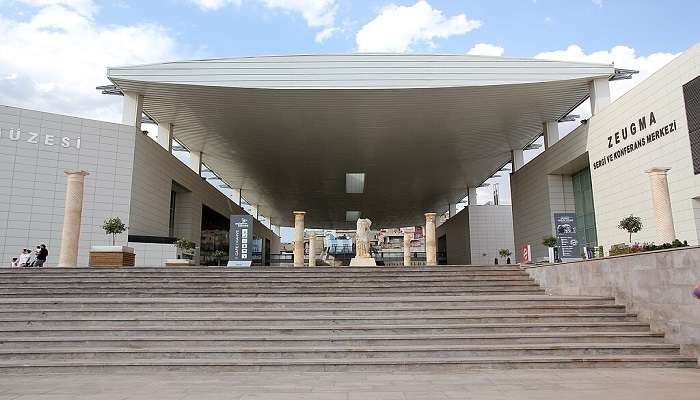
The Zeugma Mosaics Museum is located in the Giazentep region of southeast Turkey; it came into existence in 2011; and is the world’s largest museum. Zeugma was founded by one general of Alexander the Great. So much of the remains of the town now lie under the reservoir because a dam was created in Turkey in 2000. The archaeologists were able to conserve so many of the mosaics and statues, which are of great historical importance. These mosaics are believed to have adorned the walls and floors of many palaces and places in ancient times. The Zeugma Museum gives tourists a glimpse into Roman and Greek history, making it a must-visit for all those who love to read about Greek mythology or maybe have read Percy Jackson. You are sure to find many of the gods in these beautiful mosaics. The architecture of the museum is just stunning, and even if you do not know much about Greek or Roman mythology in general but love to read up on the history of various places, this is a must-add to your itinerary.
The Delightful Marvels Of The Zeugma Mosaics Museum
The intricate detailing of the mosaics and how well they are maintained make it a must-visit! There are remains that are still not open to the public to look at but some are placed in the Zeugma Museum so let us now look at some of the historical and stunning mosaics placed in the Zeugma Museum and learn a little in-depth about their history:-
1. Medusa Mosaic

There are believed to be three Gorgons in Greek mythology, and Medusa was one of them. It is believed that Athena cursed her with eternal life, a head of snakes and that whoever looked at her face would turn into stone. Athena did this to punish Medusa for seducing Poseidon in her sacred temple. The Medusa mosaic at Zeugma Mosaics Turkey depicts the physical features of Medusa – the intoxicating and sharp gaze and the head full of snakes.
Must Read: Places To Visit In Turkey With Family
2. Achilles Mosaic
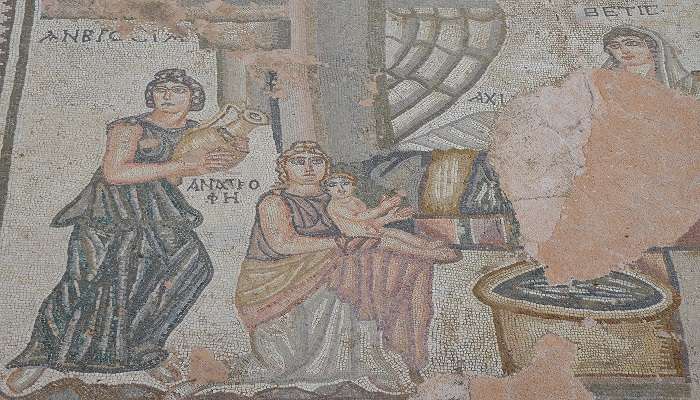
Achilles was one of the mightiest warriors, especially during the Trojan War. His victory during the Trojan War was declared when he killed the Trojan prince, Hector. The mosaic depicts, Achilles being found by Odysseus on Skyros Island, where he was sent by his parents to a king’s palace, who is a friend. Achilles dresses up as a woman, and Odysseus tries to find him among all the women, succeeds in finding him, and ends up taking him back to the Trojan War.
3. Oceanus Mosaic
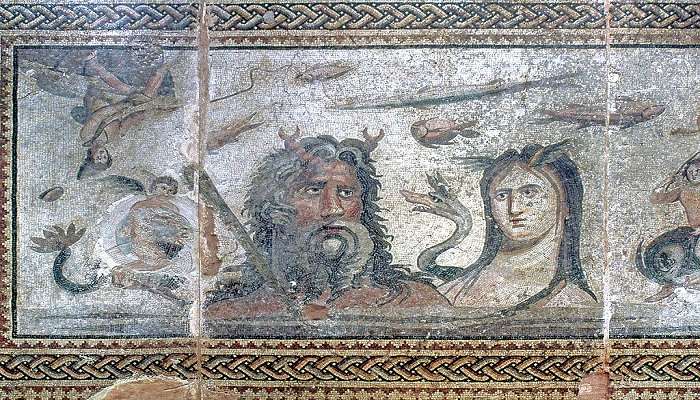
Oceanus was the oldest Titan and the personification of the water bodies that surround the earth. It was believed that Oceanus and his wife, Tethys, gave birth to all the rivers in the world. This mosaic was discovered and is believed to be the floor of the dining room, and the picture is of Oceanus and Tethys surrounded by many sea creatures.
Suggested Read: First-ever Museum of Illusions in Delhi, India
4. Gypsy Girl Mosaic
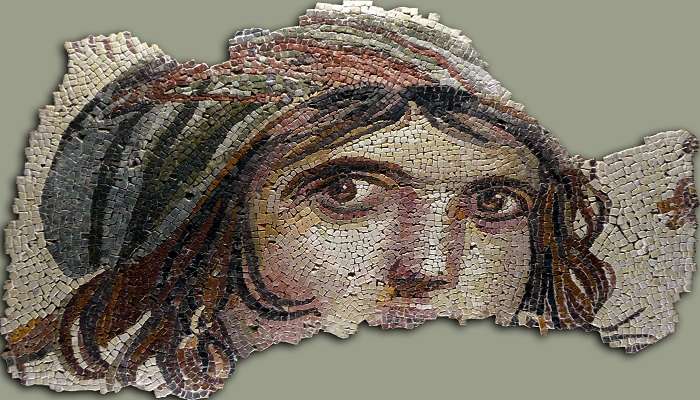
The mosaic of the gipsy girl is one of the most renowned highlights of the Zeugma Museum. She is called the gipsy girl because of the large earrings and the cap on top of her head. This mosaic has captivated a lot of tourists. The gipsy girl has striking and gorgeous eyes. The mosaic is not complete, but on the basis of the features of the face, people have compared it to the Mona Lisa, and some scholars even think that it is the depiction of Gaia, who is believed to be the mother of all creation – she came into being out of the chaos, and then she gave birth to the Titans, who then gave birth to the Gods. Gaia symbolises life, creation, and Mother Earth.
5. Dionysos

In Greek Mythology, Dionysos is the god of wine, theatre, festivity, fertility, and even pleasure. The intricate artistic detailing of the mosaic makes it a delight to look at. Dionysos is surrounded by various other mythological beings around him.
6. The Mars Statue
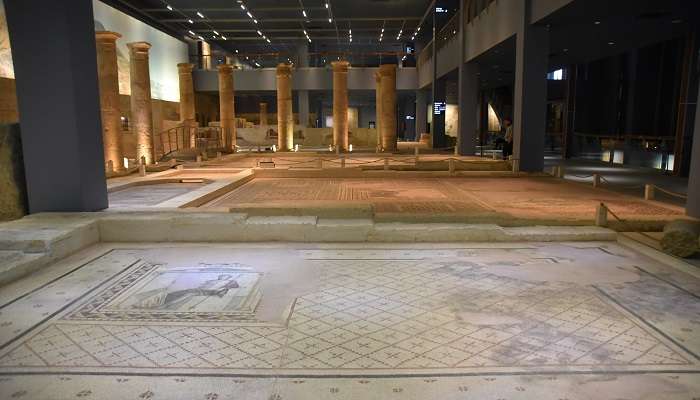
The statue of the God of War – Mars, that is right now at the Zeugma Museum was discovered after remaining underground for about 8000 years in May 2000 in the Poseidon Villa. The God of War was powerful, red-blooded, and combative. The detailing of the statue as tall, strong, muscular, and ready to fight the world is exactly a description of the personality of the God of War – Mars. The Mars statue is located at the entrance of the museum. The God of War is known for his rage, passion, aggression, and destruction. It is 150 cm in height and is a very prominent highlight of the museum, which can be seen everywhere in the museum.
Further Read: Things To Do In Turkey In 2024
The captions beneath the mosaics make it easier for tourists to learn about the history, ranging from the statue of Mars to the Gypsy Girl. There is a lot you will explore and learn about Greek and Roman history through the trip to Turkey. These are some of the marvels you are going to look at when you visit the Zeugma Museum. We hope that the history nerd in you made you add this museum to your bucket list. We promise that you will end up taking out your history books and reading more in-depth about everything that there is to know about the history of the Zeugma Museum and the marvelous mosaics that have been there for centuries. Isn’t it so fascinating? Consider this a cue to book your tickets to Turkey and plan a day to visit this museum as soon as possible.
For our editorial codes of conduct and copyright disclaimer, please click here.
Cover Image Credit: Klaus-Peter Simon for Wikimedia Commons
Frequently Asked Questions About Zeugma Mosaics Museum
What is the history of Zeugma?
In 300 BC, Zeugma was founded by the Greeks by one of the generals of Alexander the Great. It was a very prominent region and was very famous for its trade. Some of the historical remains can be found in the zeugma mosaics museum which was built in 2011. The tourists can learn more about the mosaics and statues because of the museum's historical importance of mosaics.
What are some of the prominent mosaics that tourists can expect to look at in the museum?
Some of the notable mosaics that tourists can expect to look at in the museum are of the Gypsy Girl, Medulla, Oceanus, Achilles, Zeus, Europa, Dionysos, and a statue of Mars.
Does the Zeugma Museum offer guided tours?
Yes, tourists can opt for a guided tour so that the guide can help you learn more in depth about the various mosaics and give you a seamless experience at the museum.
What are some restaurants near the Zeugma Museum that the tourists can eat at?
Sultan Kebap, Dukat Kepab, Hayal Park Cafe, Balkon Restaurant are some restaurants near the Zeugma Museum where the tourists can enjoy delicious food.
What are the languages spoken by the locals in Gaziantep, Turkey?
Arabic and Turkish are the most commonly spoken languages in Gazaintep, Turkey
What are some tourist attractions near the Zeugma Museum?
Rumkale, Gaziantep Botanik Bahcesi, Omeriya Mosque, Yesemek Open Air Museum, and Panaroma Museum are some tourist attractions near the Zeugma Museum.
People Also Read:
Museums In Bulgaria Queensland Museums Museums In Sofia

With a passion for exploring and travelling to the roads long forgotten, experience the world through enthralling stories and adventures. Join me as I share my experiences at some of the world’s most popular tourist destinations and quench that pestering curiosity with something exciting!











